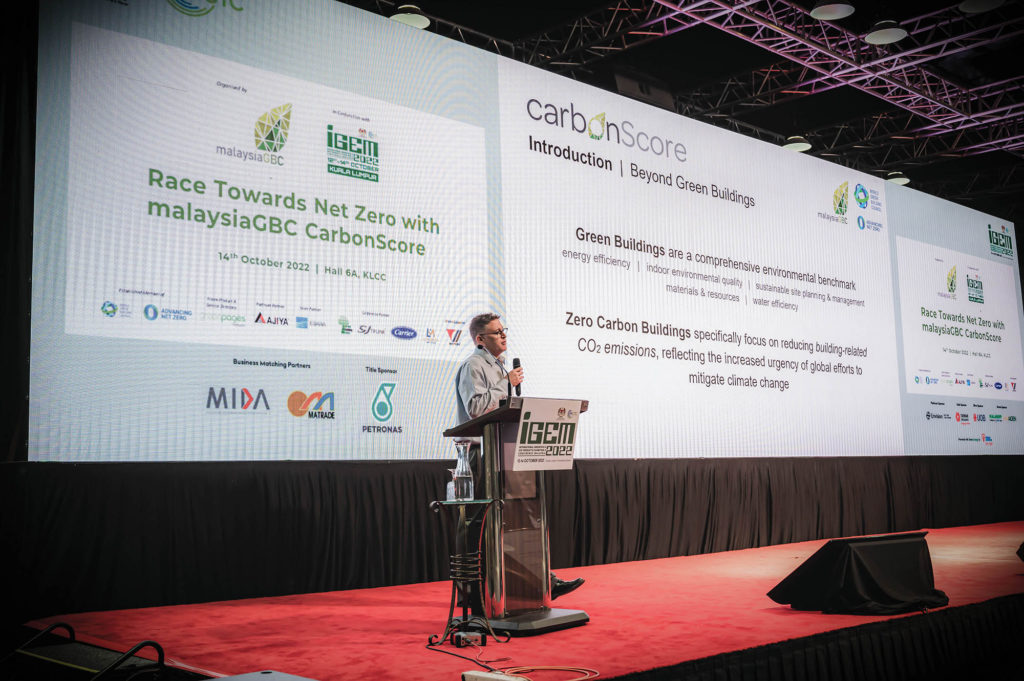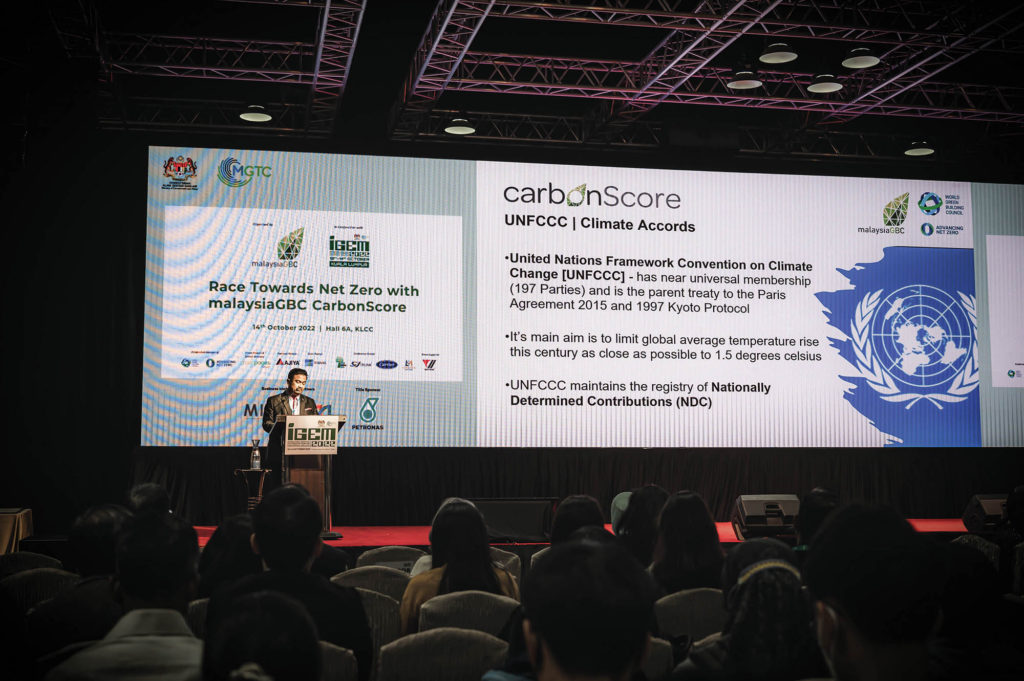4th Quarter 2022
IGEM 2022: Can we push a ‘carbon report card’ for every single building?
December 7, 2022
In Malaysia, around 1,200 buildings have a Green rating—but they only make up 0.01 per cent of the nation’s reported 7 million building stock. Since the establishment of Green building certification 15 years ago, the market has changed to demand more Green buildings, but this still represents a sliver of the whole ‘pie’. The vast majority of buildings have poor energy performance, with no installations for renewable energy or passive design.
To accelerate the building sector stakeholders in realising Malaysia’s carbon neutral commitment by 2050, an initiative called CarbonScore is being piloted since October 2022 as the country’s flagship programme under World Green Building Council’s Advancing Net Zero. CarbonScore ranks projects on a scale of building-related CO2 emissions from 0 to 100, where 0 represents business as usual and 100 means a zero-carbon building.
At International Greentech Eco Products Exhibition Conference Malaysia (IGEM) 2022, which ran from 12–14 October 2022 and themed The Race to Net Zero, an array of speakers discussed pilot CarbonScore projects at Kuala Lumpur Convention Centre (KLCC) on 14 October. By increasing public awareness, advocacy and setting an international standard of building-related carbon reporting, CarbonScore aims to take an invisible environmental challenge and render it actionable.
CarbonScore vs Green certification
Mitch Gelber, CEO of Malaysia Green Building Council (malaysiaGBC) defined and delineated the basic concepts: “Green buildings and zero-carbon buildings overlap with each other, but it’s not a redundant definition. Zero carbon does not replace Green building—Green is simply a more comprehensive benchmark, where we look at the full scope of energy efficiency, indoor environmental quality, site planning and management, materials and resources as well as water efficiency.”
On the other hand, zero-carbon buildings seek to accelerate a highly specific component of that same initiative, namely CO2 emissions. This reflects the increased urgency of global efforts to mitigate climate change.
“CarbonScore is not a prize; it’s not something you’re awarded for good performance. Think of it as a report card—every building should have its carbon footprint publicised, and that’s how we raise awareness within our communities, not just among the building sector but among the general public,” Gelber explained. “Everyone that walks into a building can see the CarbonScore and understand the environmental impact of that building, and that’s what this initiative is designed for. It’s a subtle difference from existing Green building rating tools, which were designed to acknowledge exceptional performance. This carbon score is designed to report on all buildings, not just the ones that are high-performance.”
Two tiers of reporting are provided: a basic or simplified CarbonScore model that can be filled in by laypeople and even young children, meant to mainstream the practice of assessing the carbon score of their own homes, schools or workplaces. The next tier provides a much more detailed breakdown of the carbon footprint, meant for Green financing and environmental sustainability consultants/professionals.
[This is an excerpt. Subscribe to the digital edition or hardcopy to read the complete article.]
Read more stories from FuturArc 4Q 2022 Year-End Issue!

To read the complete article, get your hardcopy at our online shop/newsstands/major bookstores; subscribe to FuturArc or download the FuturArc App to read the issues!
Previously Published Happening
Contact us at https://www.futurarc.com/contact-us for older articles.


